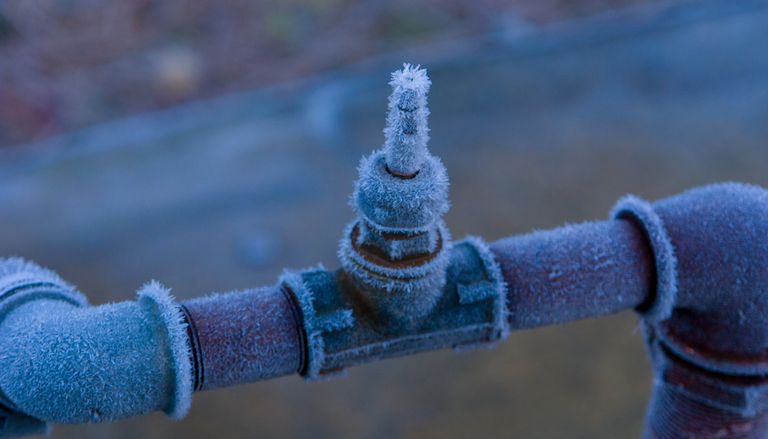Do you find yourself looking for resources around Preventing and dealing with frozen pipes?

Winter can wreak havoc on your pipes, particularly by freezing pipes. Below's just how to stop it from happening and what to do if it does.
Introduction
As temperatures decline, the threat of icy pipes increases, possibly causing expensive repair work and water damages. Recognizing exactly how to prevent icy pipes is crucial for home owners in cold environments.
Comprehending Icy Pipes
What causes pipelines to freeze?
Pipelines freeze when exposed to temperatures listed below 32 ° F (0 ° C) for extended durations. As water inside the pipelines freezes, it increases, putting pressure on the pipeline wall surfaces and possibly causing them to rupture.
Threats and problems
Frozen pipes can bring about water system disturbances, building damages, and expensive repairs. Burst pipes can flood homes and create comprehensive structural damages.
Indications of Frozen Piping
Determining frozen pipelines early can stop them from rupturing.
Exactly how to determine frozen pipelines
Seek reduced water circulation from faucets, uncommon smells or noises from pipes, and visible frost on subjected pipes.
Avoidance Tips
Insulating vulnerable pipelines
Cover pipes in insulation sleeves or make use of warm tape to shield them from freezing temperatures. Focus on pipelines in unheated or external areas of the home.
Heating strategies
Keep interior spaces effectively warmed, particularly areas with plumbing. Open cabinet doors to allow cozy air to distribute around pipes under sinks.
Protecting Outside Plumbing
Yard hoses and exterior faucets
Separate and drain garden hoses before wintertime. Set up frost-proof faucets or cover outside taps with shielded caps.
What to Do If Your Pipelines Freeze
Immediate activities to take
If you presume icy pipelines, maintain taps open up to relieve stress as the ice thaws. Use a hairdryer or towels soaked in hot water to thaw pipes gradually.
Long-Term Solutions
Architectural changes
Take into consideration rerouting pipes far from outside wall surfaces or unheated areas. Include extra insulation to attics, basements, and crawl spaces.
Updating insulation
Purchase top notch insulation for pipes, attics, and walls. Proper insulation aids keep regular temperature levels and minimizes the risk of frozen pipelines.
Conclusion
Protecting against frozen pipelines calls for positive actions and quick actions. By comprehending the causes, indications, and preventive measures, homeowners can secure their pipes throughout winter.
6 Proven Ways to Prevent Frozen Pipes and Protect Your Home
Disconnect and Drain Garden Hoses
Before winter arrives, start by disconnecting your garden hoses and draining any remaining water. Close the shut-off valves that supply outdoor hose bibs and leave the outdoor faucet open to allow any residual water to drain. For extra protection, consider using faucet covers throughout the colder months. It’s also important to drain water from any sprinkler supply lines following the manufacturer’s directions.
Insulate Exposed Pipes
Insulating your pipes is an effective way to prevent freezing. Pipe insulation is readily available at home improvement stores and is relatively inexpensive. Pay close attention to pipes in unheated areas such as the attic, basement, crawl spaces, or garage. Apply foam insulation generously to create a buffer against the cold. You can also wrap your pipes in heat tape or thermostat-controlled heat cables for added warmth.
Seal Air Leaks
Inspect your home for any cracks or openings that could let in cold air. Seal any holes around the piping in interior or exterior walls, as well as the sill plates where your home rests on its foundation. Additionally, make sure to keep your garage door closed unless you’re entering or exiting. Leaving it open creates a significant air leak that can lead to frozen pipes.
Allow Warm Air Circulation
During cold snaps, it’s essential to allow warm air to circulate evenly throughout your home. Leave interior doors ajar to promote better airflow. Open kitchen and bathroom cabinets to help distribute heat consistently around the rooms. If you have small children or pets, be sure to remove any household chemicals or potentially harmful cleaners from open cabinets for safety.
Let Faucets Drip
A small trickle of water can make a big difference in preventing ice formation inside your pipes. When temperatures drop significantly, start a drip of water from all faucets served by exposed pipes. This continuous flow helps prevent the water from freezing. Additionally, running a few faucets slightly can relieve pressure inside the pipes, reducing the chances of a rupture if the water inside does freeze.
https://choateshvac.com/6-proven-ways-to-prevent-frozen-pipes-and-protect-your-home/

Do you enjoy more info about How To Avoid Freezing Pipes? Put a review directly below. We'd be glad to hear your opinion about this blog posting. In hopes to see you back again soon. Liked our piece? Please quickly share it. Help another person find it. Thanks so much for your time spent reading it.
Book Appointment Now